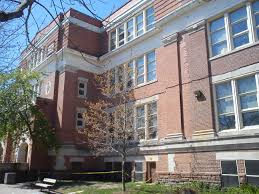On June 19, we finally heard from Premier Ford and Education Minister Lecce with their proposed “plan” for a safe return to schools in September. Well, as per the Ministry website, the government actually refers to it as an “approach” that must be interpreted and then executed by school boards. In this “approach” document, it is noted that, “Adequately ventilated classroom environments are expected to be associated with less likelihood of transmission compared with poorly ventilated settings.”
How can local schools ensure that classrooms w/no windows, windows that do not open & ones that only open a tiny bit ensure proper ventilation? Provincial funding should be flowing immediately to school boards to fix these issues. Contact your local MPP! #onted #onpoli @SFleece pic.twitter.com/9NWl7fZNWE
— Fix Our Schools (@Fix_Our_Schools) June 25, 2020
Specifically, school boards are given the following guidance:
-
- “Avoid recirculation of air, as far as practically possible and ensure clean filters.
- In general, ventilating indoor environments with fresh air, whether by increasing the outdoor air ratio of the HVAC system settings as much as possible or by opening windows, and avoiding or reducing recirculation, will dilute the air exhaled by the occupants including any infectious particles. Even if this is not feasible for the whole facility, consider for higher risk areas, e.g., where crowding may be an issue.
- Recommended maintenance measures for air handling systems (including inspection and replacement of filters, if applicable) are essential to follow.
- There may be instances of bladed and bladeless fan and portable air conditioner use in schools which also generate air currents that could affect respiratory droplets
- Minimizing their use as much as possible (e.g., lowest setting), and making adjustments to direct the airflow upwards, away from surfaces and occupants may help gradually mix exhaled respiratory droplets while minimizing turbulence.
- These devices also require regular maintenance, e.g., surface cleaning including the blades; following manufacturer’s directions for maintenance and removing any moisture or water collected from the portable air conditioners.
- Do not open windows and doors if doing so poses a safety or health risk, e.g., risk of falling, triggering asthma symptoms, risk of bees/wasps, to students and staff and ensure that COVID-19 measures do not introduce new occupational hazards to the setting, e.g., do not prop open fire doors to increase ventilation/reduce exposure to frequently touched door handles.”
Unfortunately, the sad fact is that there are many classrooms in Ontario’s publicly funded schools with no windows, or windows that do not open, or with windows that only open a tiny bit – not nearly enough to create airflow and good ventilation. For example, both Roden Public School and Equinox Alternative School in the TDSB have no windows that open anywhere in the building.
If your local school has classrooms with this issue – we want to hear from you with the name of your local school, the issue you are concerned about and if you know your local MPP and/or the name of your provincial riding, that would be great too! Please contact us today to share any concerns you have about your local school being able to ensure the ventilation in classrooms that will be required to help avoid the spread of COVID in classrooms.
Provincial funding should be flowing immediately to school boards to fix this issue. If the Province believes that its ongoing $1.4-billion/year capital investment will be sufficient for school boards to find money in their capital budgets to conduct these types of projects in the coming two months, then the Province is being disingenuous. The repair backlog in Ontario’s publicly funded schools has continued to increase to a whopping $16.3-billion even with yearly investments of $1.4-billion/year since June 2016. School boards often end up only having sufficient funding to deal with reactive repairs and not the proactive repairs required – especially in a global pandemic.
"In the early 20th century, open air schools became common in Northern Europe, designed to prevent and combat the widespread rise of tuberculosis. Schools were built on the concept of exposure to fresh air, good ventilation and exposure to the outside!" https://t.co/7Q6yIRACJZ
— Wrath Of Gnon (@wrathofgnon) June 4, 2020

